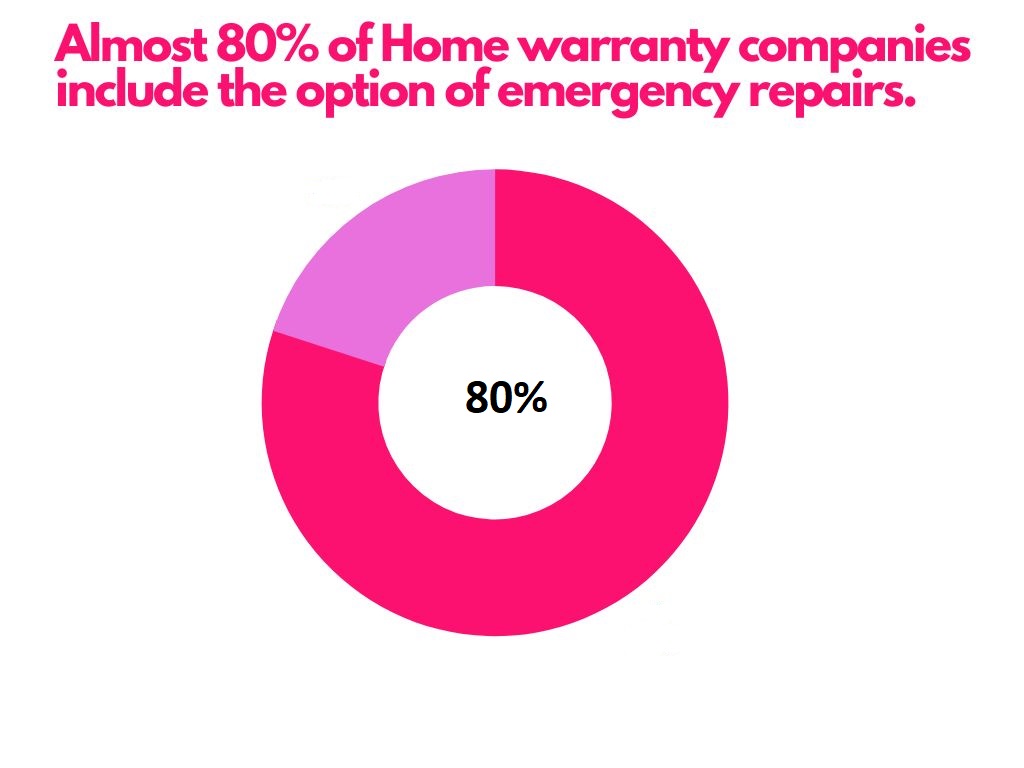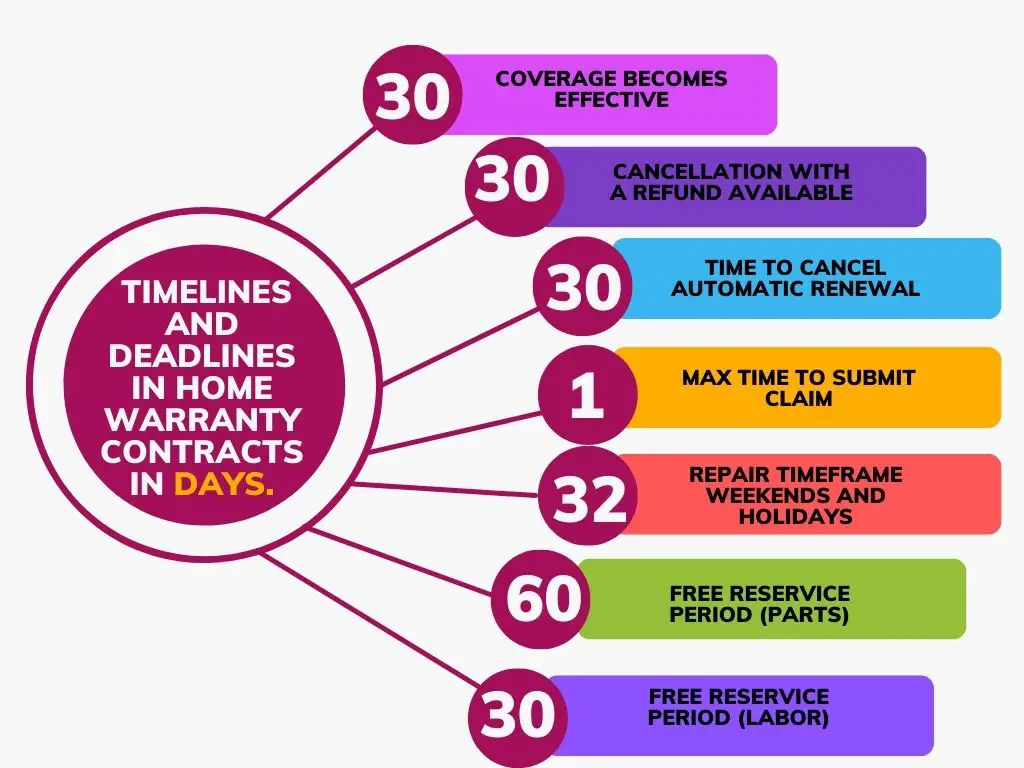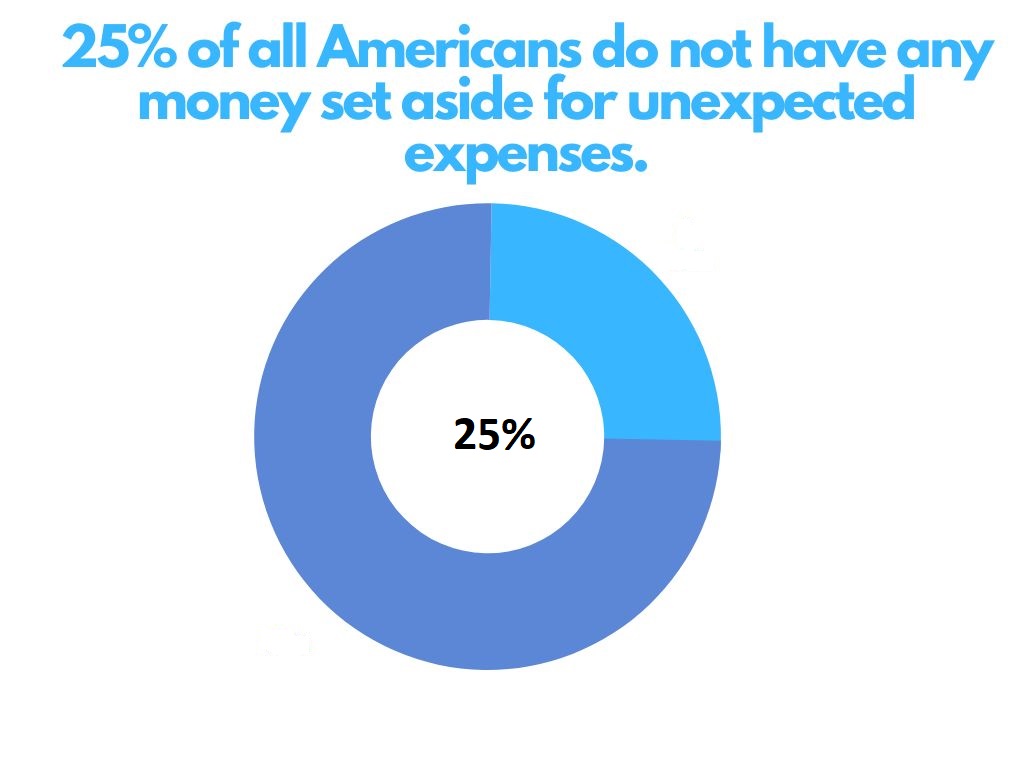The home warranty industry or providers underwrites home warranty policies. Consumers who purchase home warranty insurance have their repair and replacement costs for structural or appliance defects and normal wear and tear covered by this sector.
Repair, maintenance, and replacement of home systems and appliances are all covered under a home warranty contract between a warranty provider and the homeowner.
Plumbing, electricity, HVAC, refrigerators, dishwashers, washers, and dryers are all covered in the average home warranty.
What’s the difference between a home warranty and home insurance?
Home warranties are distinct from homeowner’s insurance in that the latter covers your residence and its contents against a variety of perils, such as fire, flood, and theft.
Only specific catastrophes, such as hurricanes, fires, and vandalism, are covered by insurance when it comes to damage to the home’s structure. Repairs for appliances and systems that break down due to wear and tear or age are covered by home warranties.
How does the home warranty contract work?
The home warranty provides access to a restricted number of local contractors that have an ongoing contract with the warranty company. There is a small charge for these professionals to come to your home when you request a service visit, and they give an examination of the problem and, if necessary, repair or replacement (typically $55 to $150 each call). In order to get the discounted rate, you must pay an upfront fee (often a yearly or semi-annual payment).
In the event that something in your house malfunctions or breaks, you may not be provided with a free replacement or fast repair. A cost-benefit analysis is used to decide the optimum course of action, which is often analyzed from the perspective of the home warranty business. A financial payment may be made if a repair is deemed to be impossible. If a home appliance or other item can’t be repaired, the contract will establish the amount of money that can be paid out in cash. If the fine print in the contract includes restrictions and limitations on payout, the analysis and calculation technique, and the likelihood that the payout does not cover the whole cost of a new product, the customer should be informed. We strongly advise customers to read the contract and all of the fine print carefully before making a purchase.
Home warranty statistics.
1. According to the most current cost research, the average monthly cost of a home warranty plan is between $36 and $68 (or $432 to $816 per year).
2. Annual expenditures range from $264 to $1,425 per year, depending on the insurance provider and amount of coverage.
3. Deductibles, or service call costs, can range from $55 to $150, depending on the terms of your agreement.
4. the number of claims per customer for a whole year on average is about two and half.
5. A CAGR (or compound annual growth rate) of almost 12 percent per year has been recorded in the home warranty industry over the previous four years.
6. The Covid-19 outbreak has spurred a surge in the popularity of home warranty coverage. Homeowners are purchasing home warranty coverage in greater numbers than ever before.
9. The typical repair on a major appliance ranges from $105 to $241.
10.The market value of the global home warranty service market is $7,885.7 million in 2021.
11. Global home warranty service market is expected to reach $13,611.2 MILLION BY 2030
12. Growing at a CAGR (compound annual growth rate) of 6.3% (2021 – 2030)
13. Almost 80% of warranties include the option of emergency repairs. Only 7.5% of the companies do not offer such a service, and 1.5% will provide emergency service only for an extra fee.
14. Coverage becomes effective – 30 days
15. Cancellation with a refund available – 30 days
16. Emergency service available – 79% of companies
17. Time to cancel automatic renewal 30 days
18. Max time to submit claim – 1 day
19. Repair timeframe – 2 days
20. Business hours for service calls – 15% companies
21. Free reservice period (parts) – 60 days
22. Free reservice period (labor) – 30 days
Home warranty industry size.
Home Warranty Providers in the US Market Size in 2022

Home Warranty Providers in the US Market Size Growth in 2022.

Home Warranty Providers in the US Annualized Market Size Growth 2017–2022.

How long does it take to get an emergency service with a home warranty?
Almost 80% of warranties include the option of emergency repairs. Only 7.5% of the companies do not offer such a service, and 1.5% will provide emergency service only for an extra fee.

Timelines and deadlines in home warranty contracts.

Coverage becomes effective 30 days
Cancellation with a refund available 30 days
Time to cancel automatic renewal 30 days
Max time to submit claim 1 day
Repair timeframe 2 days
Repair timeframe weekends and holidays 32 days 24/7
Free reservice period (parts) 60 days
Free reservice period (labor) 30 days
How many Americans have a home warranty?

Frontdoor, parent company of AHS, estimates that 1.4 million out of the 5.64 million existing homes sold last year in the U.S. had home warranties purchased by either the buyer or the seller, and that four million out of an estimated 121 million homes in existence were currently covered by a home warranty. It estimates its own customer count at 2.25 million home warranty clients at the end of last year, up from two million at the end of 2017.
Is home warranty a waste of money?
No. Home warranty is not a waste of money. However, when signing a home warranty contract you have to be specific on what the home warranty company can and will do for you in the event of a breakdown of your appliance or structural defect.
To further help you decide, let’s look at the pros and cons of investing in an home warranty contract.
PROS.
When you buy a house, you don’t want the AC to go out in the middle of summer. Having a home warranty is designed to offer you a sense of security in the event of anything like this.
What a house warranty may do for you is as follows:
Insures against unanticipated costs. If you can’t afford to fix your pricey equipment and systems when they break down, a warranty may be able to assist.
• It saves you time and effort. In the event of a malfunction, you need just submit a claim to your warranty provider, who will take care of the rest. Getting contractor bids or attempting repairs on your own isn’t necessary, and neither is wasting time.
CONS.
Warranty agreements are full of methods for the corporation to gain money by undercutting you when it comes to the service you’re getting.
To give you a few instances, consider these:
• A lack of attention to detail. When a warranty provider inspects your appliance, they may find an outdated item that should have been changed long ago (but you didn’t know about it). Your repair claim was denied because you didn’t properly “keep” it.
• Repairing rather than replacing. Because the equipment has broken down so many times, the corporation may insist on fixing it rather than replacing it. It’s possible that they might refuse to replace it since even if it’s on its final legs, it can still be repaired.
• The extent to which it is covered. In certain cases, you may find that the warranty provider totally refuses to cover some big-ticket goods (like a very old HVAC unit) or refuses to cover a repair because it isn’t covered by the sort of warranty plan you now have.
The absence of alternatives. Repairs and replacements will be done by a contractor chosen by your warranty company, and you will have no say in the matter. There’s nothing you can do if they’re unprofessional. You won’t be able to influence the brand or model of the replacement components that the contractor chooses to use, either.
Home warranty price comparison.
Compared below is the average monthly premium ranges, average monthly costs for combo plans, and service fees for some of the best home warranty companies.
| Average monthly premium | Average combo plan | Service fee | |
| American Home Shield | $29.99 to $69.99 | $60 | $75, $100 or $125 |
| Select Home Warranty | $57 to $63 | $63 | $75 or $100 |
| American Residential Warranty | $34.99 to $124.99 | $60 | $55 |
| HomeServe | $7.99 to $58.33 | $58.33 | $100 |
| America’s 1st Choice Home Club | $32.08 to $55 | $55 | $75, $100 or $125 |
How much can you save on home repair costs?
Estimate the cost of repairing or replacing your appliances and systems and compare it to the monthly cost of a home warranty plan to see how much money you can save (plus the service fee for each claim).
| Typical repair cost | Replacement cost range | Average life span | |
| Refrigerator or freezer | $200 to $330 | $430 to $10,600 | 10 to 15 years |
| Oven or range | $100 to $430 | $410 to $7,500 | 20 years |
| Dishwasher | $160 to $300 | $330 to $1,900 | 9 to 10 years |
| Washing machine | $100 to $350 | $445 to $2,300 | 11 to 14 years |
| Clothes dryer | $180 | $445 to $2,100 | 8 to 12 years |
| Built-in microwave | $150 | $200 to $2,000 | 10 years |
| Central air conditioning | $170 to $600 | $3,900 to $7,500 | Up to 15 years |
| Water heater | $220 to $955 | $820 to $1,595 | 8 to 10 years |
| Garbage disposal | $250 | $150 to $950 | 10 years |
NOTE: The appliance life span varies by make and model. Check with the manufacturer for specific details. The typical repair on a major appliance ranges from $105 to $241, according to HomeAdvisor.
The outlook for the home warranty business.
To see how the future of the home warranty business will look like going forward, we can look at how the top performing business, the Americam Home shield (AHS) is performing.
According to Warranty Week estimates, AHS and its sister companies continue to gradually expand their market share, from 42% of a $1.56 billion market back in 2010 to nearly 47% of a $3.15 billion market in 2020.

It is estimated that 25% (about 1.4 million) out of the 5.64 million existing homes sold in 2020 in the U.S. had home warranties purchased by either the buyer or the seller, and that 3.3% (about four million) out of an estimated 121 million homes in existence were currently covered by a home warranty. AHS estimates its own customer count at 2.25 million home warranty clients at the end of 2020, up from two million at the end of 2017.
What does a home warranty actually cover?
According to American Home Shield, you can expect to pay the following to fix some of these important items that home warranty covers:
Air Conditioning Unit $150 – $3,800
Heating and Ductwork $105 – $3,635
Refrigerator $200 – $1,500
Water Heater $240 – $1,200
Other things that can be covered by home warranty repair contract are:
Foundation Repair $2,008 to $7,040, up to $40,000.
Electrical repairs: $141 to $419 for minor repairs; $2,000 to $6,000 for full electrical wiring.
Average cost of roof repairs: $300 to $2,000 for partial repairs; $5,397 to $11,035 for a full roof replacement.
water heater repairs: $579 to repair, up to $1,300 to replace
fix water damage: $1,181 and $4,938, with an average of $3,046
repair pipes: anywhere from $300 for a leak repair to $2,500 for a sewer line repair
repair a septic system: $1,702 average to repair, $3,000 to $9,500 for a new installation
Average cost to fix a heating or air conditioning unit: up to $577 for A/C repair, $5,000 to $12,500 for a professional furnace installation. Average cost of mold remediation: $2,218.
What Is Not Covered By a Home Warranty?
Each home warranty plan offers a different level of coverage, hence it is important to pick the one that’s right for you. As a result, the following things are often not covered by a home warranty:
- Pre-existing conditions
- Failed maintenance
- Improper installation
- Cosmetic issues
- Appliance misuse
- Any repairs over the coverage limit?
Why do people want home warranty?
Home warranties are appealing to many people because of the high expense that may be incurred when covering the repair of common household equipment. Also, it has been reported that one-third of homeowners in the United States have less than $500 or, even worse, nothing set aside for an emergency home repair, and this includes fifty percent of homeowners with an annual household income of less than fifty thousand dollars.
A quarter, that is 25% of all Americans do not have any money set aside for unexpected expenses.

Factors that Determine the Cost of a Home Warranty .
Home warranty costs are determined by a number of factors, including the following:
1. The home warranty provider
2. The strategy you choose (For example, your coverage level). Options for home warranties are not always one-and-done. Companies frequently have a wide range of options available to fulfill the demands of their customers.
3. Inclusion of optional extras.
4. The size of your home. It’s common for a larger home to cost more each month.
Best home warranty companies in the United States of America.

Home warranty companies service fees and states covered.
AFC Home Club Service Fees $75 to $125 Number of States 49 + District of Columbia
American Home Shield Service Fees $75 to $125 Number of States 49
Cinch Home Services Service Fees $75 to $150 Number of States 48
ARW Home Service Fees $55 Number of States 46 + District of Columbia
Liberty Home Guard Service Fees $60 Number of States 50
AChoice Home Warranty Service Fees $85 Number of States 48 + District of Columbia
Select Home Warranty Service Fees $60 to $75 Number of States 46 + District of Columbia
ServicePlus Home Warranty Service Fees $75 Number of States 46 + District of Columbia
Amazon Home Warranty Service Fees $75 Number of States 44 + District of Columbia
2-10 Home Buyers Warranty Service Fees $75 to $100 Number of States 48 + District of Columbia
What Drives the Home Warranty Market?
Protecting pricey appliances including refrigerators, HVAC systems, dishwashers, ovens, cooktops, plumbing, and electrical systems is a primary driver of the home warranty service market’s expansion. This aids in household appliance and system upkeep and repair. In addition, there has been an increase in consumer awareness of warranty services in tire 2 and tire 3 cities. A growing number of homeowners are signing up for house warranty services as a result of this increased awareness.
What is hampering the home warranty market?
Some of the things that hamper the growth of home warranty are hidden fees at the time of warranty claims and strict service provider policies. In addition, the building, industrial, lodging, and tourist industries were all adversely affected by the COVID-19 epidemic. Production has been discontinued or is being curtailed.
It was a global problem that affected construction and transportation activities and their supply networks. As a result, both the supply and demand for house warranty services fell, putting the brakes on the market’s expansion. Industries, on the other hand, are progressively returning to normal operations in terms of production and service provision. Home warranty service businesses are predicted to return to full capacity by the middle of 2022 as a result of this, which will assist the market recover.
Expected global home warranty service market.
The global home warranty service market is expected to reach $13,611.2 million by 2030.
Growing at a CAGR of 6.3% (2021 – 2030).
Frequently asked questions.
What is the entire market value for the home warranty industry?
A. In 2020, the market for house warranty services was valued at $7,315.1 million, and it is anticipated that it would reach $13,611.2 million by 2030, showing a CAGR of 6.3 percent from 2021 to 2030.
For the study on the worldwide market for home warranty services, what time frame would be considered the forecast?
A. The period from 2021 to 2030 has been assumed to be the forecast term for the worldwide market for home warranty services. The year 2020 has been chosen as the base year, 2021 has been chosen as the estimated year, and 2030 has been chosen as the forecast year.
Who are the leading players in the worldwide market for home warranty services?
A. The top companies holding the market share in the global home warranty service market report include AFC Home Club, Cinch Home Services, Inc., First American Home Warranty, FNHW (Fidelity National Home Warranty), Frontdoor, Inc., Home Buyers Warranty Corporation, Landmark Home Warranty, Old Republic International Corporation, Oneguard Home Warranties and Transforms SR Brands LLC.
What criteria are used to select the leading companies in the home warranty industry?
A. The top ten market players are selected based on two key attributes – competitive strength and market positioning.
Which section of the global home warranty service market is expanding the fastest?
- For the worldwide home warranty service industry, brokers are predicted to continue to be the most lucrative distribution channel, based on revenue.
In terms of worldwide home warranty service sales, which market has the most share?
A significant portion of the worldwide home warranty service market is dominated by the residential sector.
How long does it take to get an emergency service with a home warranty?
Almost 80% of warranties include the option of emergency repairs. Only 7.5% of the companies do not offer such a service, and 1.5% will provide emergency service only for an extra fee.
Sources for this post.
https://www.consumeraffairs.com
https://www.homewarrantyreviews.com